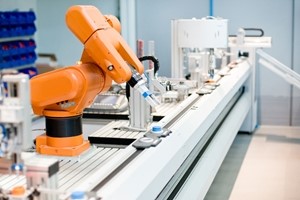One of the main themes that has been increasing in intensity and breadth throughout the past several years is that technological innovation speeds up at an exponential rate.

Right when business leaders, consumers and government officials believe that the world has reached a proverbial plateau with respect to new technologies being developed and released, several new major and complex trends begin to surface and make it clear that progress will not be slowed for any reason.
This is certainly a positive theme when looking at economic growth, the improvement of business operations, strengthening health care and a wealth of other critical objectives shared by all members of the populous, but a highly challenging one for businesses. Among the most common reasons why innovation translates to obstacles in enterprise is that talent shortages are already high and only just beginning to show how dangerous the trend can be.
Studies indicate that, unless something major is done to completely overhaul the global education system and get the workforce up to speed with necessary skills soon, even more businesses and potentially entire industries will run into brick walls of sorts. This is why training investments for popular technologies such as cloud computing courses and big data learning programs should be discussed by boardroom members in virtually every organization, as so few do not rely on advanced solutions to complete daily tasks.
And the innovation keeps rolling
To illustrate and back the assertion that technological innovation is accelerating rather than tapering off, it might be helpful to look at a new report released by market intelligence firm Tractica regarding the next generation of corporate IT capabilities. According to the report, artificial intelligence will begin to be far more commonly integrated into the average business IT framework within the next decade, which means highly advanced skills will be needed.
The authors pointed out that the more recent combination of machine learning, control theory and even neuroscience has been made possible through efforts to couple artificial intelligence with probability and statistics. This, combined with the enormous increases in processing power that have been widespread thanks to more advanced systems such as cloud computing, has led to a clear sign that AI will begin to be present in enterprise applications, cloud computing frameworks, network products, graphics, backend hardware and more.
Now, if a business is struggling to wrap its mind around current application management and cloud computing optimization processes, chances are AI will throw yet another wrench into the equation. The time is now to begin preparing through training.
“While artificial intelligence has been just beyond the horizon for decades, a new era is dawning,” Tractica principal analyst Bruce Daley affirmed. “Systems modeled on the human brain such as deep learning are being applied to tasks as varied as medical diagnostic systems, credit scoring, program trading, fraud detection, product recommendations, image classification, speech recognition, language translation, and self-driving vehicles. The results are starting to speak for themselves.”
It pays to be proactive
Signs of an impending skills gap did not just sprout up out of thin air as the strains of the issue began to be felt. Rather, studies had indicated that this would be a problem years ago, with some researchers pointing to the issue as being a severe economic threat as far back as the early 2000s. Because of this, one could make the argument that a lack of proactive and persistent efforts to navigate the challenge led to the current situation.
By investing in cloud computing and big data courses, as well as other technology training assets, companies can begin to right the ship and prepare for the next wave of advanced tools.


